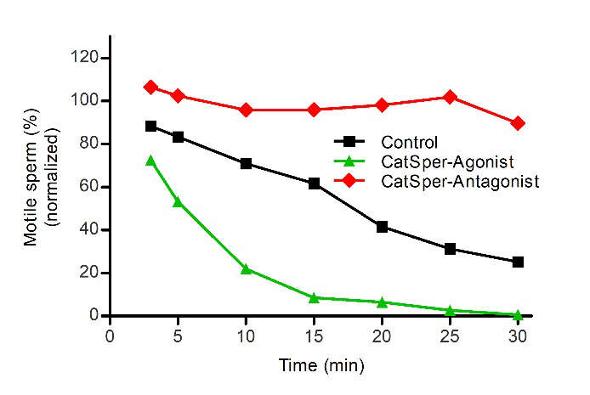Internationale Partnersuche
Innovation & Technologie Angebot
Affecting sperm function for non-hormonal contraception
Country of Origin: Germany
Reference Number: TODE20210601003
Publication Date: 4 June 2021
Summary
A German university offers high-throughput screening assay to identify cation channel of sperm (CatSper) modulators. A loss of CatSper function can prevent fertilization without side effects. Thus pharmacological contraception for men can be made available. Partners from pharmaceutical industry are sought for license agreements.
Description
Since its market release in the early 1960s, the “contraceptive pill” has enjoyed particular popularity among family planning methods and is a prime example of blockbuster drugs. However, during the last decades, a quest for modern non-hormonal contraceptives has emerged to not only provide an alternative with fewer side effects for women, but also render pharmacological contraception accessible for men.
A promising strategy for non-hormonal contraception is to affect sperm functions that are essential for fertilization, i.e. motility. The cation channel of sperm (CatSper) Ca2+ channel in the sperm flagellum takes a center stage in the control of sperm motility: It is well-established that a loss of CatSper function leads to non-syndromic male infertility. CatSper is expressed exclusively in sperm, indicating that drugs that selectively target CatSper have the potential to prevent fertilization with virtually no side effects.
However, because CatSper cannot be functionally expressed in culture cells, drug-discovery attempts rely on Ca2+-fluorometric readout of the activity of native CatSper in human sperm, rendering high-throughput screening campaigns, thus far, largely impossible.
A German university developed a novel method that overcomes this problem: The method enables high-throughput drug-screening campaigns for the identification of CatSper modulators. To this end, the university's test transforms drug-evoked changes in the activity of CatSper into a simple sperm-motility response. This allows not only to rapidly screen large compound libraries for drugs acting on CatSper, but also the immediate grading of the inhibitory or agonistic action of the tested compounds, e.g. for the straight-forward drafting of structure-response relationships.
The test layout is simple: A small number of motile human sperm, derived directly from a native ejaculate, is subjected to an assay buffer fortified with the compound to be tested. The decrease in motility of this sperm population is observed over time – in a continuous or end-point fashion, e.g. inside the wells of common multiwell assay plates. Compared to a control without drugs added, the sperm motility decreases faster or slower (or is abolished altogether) in the presence of a CatSper agonist or inhibitor, respectively. The half-life time of the sperm population provides a direct readout of the agonistic or inhibitory performance of the tested drug.
The CatSper-modulator test transforms CatSper function into a sperm population motility response: In the presence of a CatSper agonist, the population motility decreases faster, while a CatSper inhibitor extends its half-life time.
License agreements are offered to pharmaceutical companies that are interested in contraceptives for men.

Advantages and Innovations
• The university’s CatSper-modulator test is currently the only method suitable for a high-throughput screening on an industrial scale.
In vitro drug-screening assay for CatSper modulators, which is safe, reliable, rapid and simple to perform.
• The assay can be performed directly with the native ejaculate.
• No specific devices are required.
Stage Of Development
Under development/lab tested
Requested partner
The university offers license agreements
Type of partner sought: pharmaceutical companies searching for new non-hormonal contraceptives for men.
Role of partner: Make use of the invention for drug screening for the identification of cation channel of sperm (CatSper) modulators. Drugs that selectively target CatSper have the potential to prevent fertilization with virtually no side effects.
Kooperationsanfrage stellen

